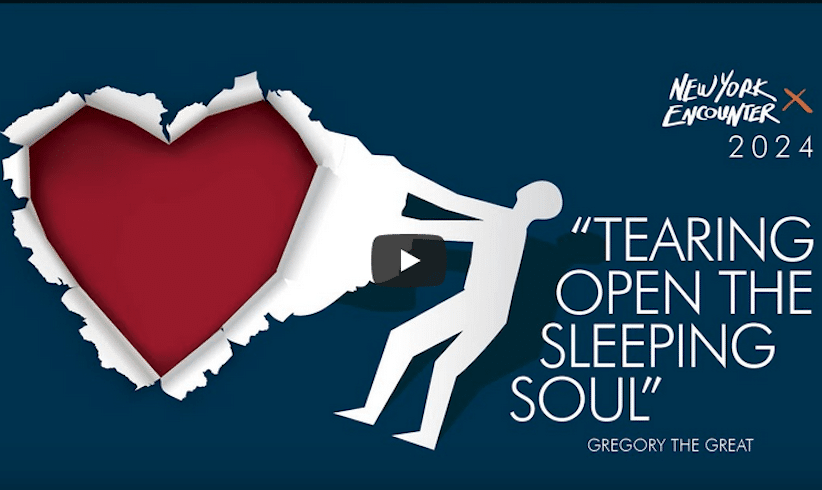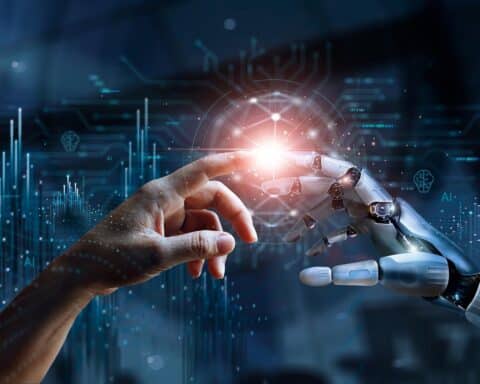(OSV News) — The annual New York Encounter, held Feb. 16-18 and organized by the Catholic lay movement Communion and Liberation, had as this year’s theme, “Tearing Open the Sleeping Soul,” addressing with music, poetry and panel discussions, “a sense of paralysis in front of the future; suffering and evil devoid of meaning or redemption; general weariness, malaise, numbness and lack of desire.”
A Feb. 18 discussion, “Beyond Left and Right,” examined the nature, role and future of the U.S. Supreme Court, without delving into current cases.
“What I do think is new is, there’s a sense in which the federal government does a lot more than it used to do, so what federal courts do is more important than what it was 50 years ago,” said Jeffrey Pojanowski, a law professor at the University of Notre Dame in Indiana. “I think there’s more fervor than there used to be.”
That is likely because “we have short historical memories,” said Judge Stephanos Bibas, appointed by President Donald Trump in 2017 to the 3rd U.S. Circuit Court of Appeals, based in Philadelphia.
The fights between the Federalists, led by Alexander Hamilton, and the anti-Federalists, led by Thomas Jefferson, over the Louisiana Purchase in 1803 “were a really big deal,” the judge said. “Our country is divided, but was more divided around the Civil War. (During) the Gilded Age and laissez-faire capitalism around the turn of the 20th century … there was open fighting between the Democrats and Republicans over what the government and courts should allow or step in to do.
“There was tons of controversy over the demise of Jim Crow, and the Civil Rights Movement, so of course, our society goes through these cycles in which people get polarized, get tribalized,” he said.
“Modern media,” Bibas concluded, “makes this worse,” and “the extent of the federal government’s footprint makes it more consequential at the federal level … but it seems to me to be more of a symptom than a cause.”
How a judge decides court cases
Bibas felt the piercing glare of intense news coverage early on. He is best-known for his 2020 decision rejecting President Donald Trump’s bid to block President Joe Biden from being declared the winner of Pennsylvania’s electoral votes.
The judge pointed out that there’s public confusion about what he does when he decides a case.
Rather than approaching it with his own advocacy, “I have to wait until someone who is hurt” submits a complaint for a hearing. “Many of these cases never make it to court because there’s no one who is hurt,” he said.
And decisions apply only to the people whose cases are heard, he said, adding, “It may seem unsatisfying to people, but we’re not announcing that this will never happen again to anyone.”
Federal courts, he said, “are actually more restrained … than the news coverage might suggest.”
Citing the Supreme Court’s landmark 1954 civil rights ruling Brown v. Board of Education, which found racial segregation in public schools was unconstitutional, Pojanowski observed, “The court can’t say. ‘We’re not going to decide this.'” The response instead should be, “We have no choice except to do what we think the Constitution requires.” Bibas pointed out, “The Founding Fathers had a real sense of the limits of human nature.”
And in keeping with the event’s theme, the judge offered his advice for happiness.
“Do less of following the national media. Visit public trials, see how juries operate. Wherever you live, go visit your local court,” Bibas said. “The more you get out to local spaces, the more you get off your phones … the happier you’ll be.”
Looming AI technology
A Feb. 17 discussion on looming technology, “AI and I: A Fundamental Difference?” concluded that artificial intelligence, or AI, considered a threat to working actors during the recent SAG-AFTRA strike, could be more of a boon for working journalists.
“AI actually deepens out the language,” said Jim Stokes, co-founder and chief product officer of Symbolic AI, a company that builds AI-powered tools for publishers. “It can express what you intended to say, although you didn’t type it out.”
“I’m lucky to work with expert users of language,” he added.
“Ultimately, I think Generation AI is a search technology,” he said. Speaking of the building block of AI — numbers on a number line — he said, “We bring our baggage to that number, and interpret it as a thing.”
And AI will most certainly replace one of the drudgery tasks of journalism — writing up quarterly earnings calls. “That is the kind of work AI can do that no one in my field wants to do,” Stokes said.
Echoing every workplace prophecy made since the dawn of the Industrial Revolution, Stokes said, “Humans will sort of move up the value chain. It can do this sort of low-level series of tasks very well.”
Stokes suggested, “The easiest way of thinking about it on a societal level is that AI is older than you think. It’s been going on for decades,” but the immensity of it means “we can sift through stuff faster.”
Communion and Liberation was started by Msgr. Luigi Giussani. The Italian priest and educator founded the movement — originally for students — in the 1950s in Milan. He died in February 2005, and his sainthood cause was officially opened in 2012, giving him the title “Servant of God.”
Communion and Liberation, which stresses the “experience” of one’s encounter with Jesus Christ and a subsequent transformation into knowing one’s public purpose, was a particular favorite of Pope Benedict XVI, who as Cardinal Joseph Ratzinger celebrated Msgr. Giussani’s funeral Mass Feb. 24, 2005.





